Let us journey onward, this time to women who first published speculative fiction in the 1980s whose surnames begin with B. There are no small number. (And of course you can find the previous installment covering names beginning with A here, while the entire series of articles on the 1970s as well as the ‘80s are collected here.)
Nancy Baker
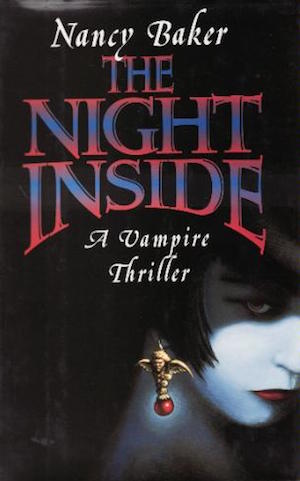
Canadian Nancy Baker has been publishing dark fantasy since the late 1980s. She has published four novels so far (and a fifth is coming out soon). Readers new to Baker might want to sample her 1993 The Night Inside (also published as The Kiss of the Vampire), in which grad student Ardeth Alexander is targeted by a vampire.
Virginia Baker
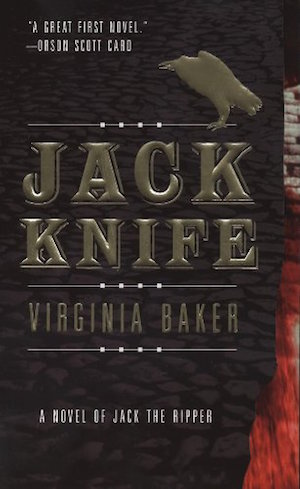
Although active since the 1980s, Virginia Baker appears to have published just one novel thus far: 2007’s Jack Knife, in which the effort to catch the killer responsible for the Ripper murders is complicated by two time travellers.
Cherith Baldry
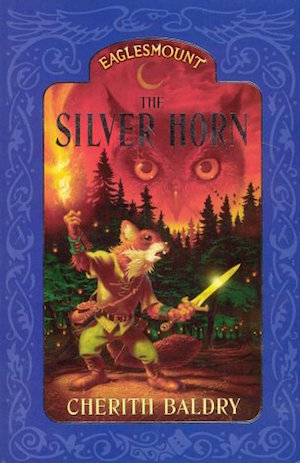
British teacher Cherith Baldry is moderately prolific under her own name; she also publishes under a number of house names (Adam Blade, Jenny Dale, Jack Dillon, and Erin Hunter). If interested in her YA material, readers might try the anthropomorphic adventure The Silver Horn, or perhaps one of the Warriors novels published under the shared pen-name Erin Hunter. Unfortunately I am a bit unclear how the authors sharing that name (Kate Cary, Cherith Baldry, Tui Sutherland, and several others) manage the workload. Do they all collaborate on each book or are different instalments written by a specific author? Feel free to provide more information in comments!
Wendy Barish
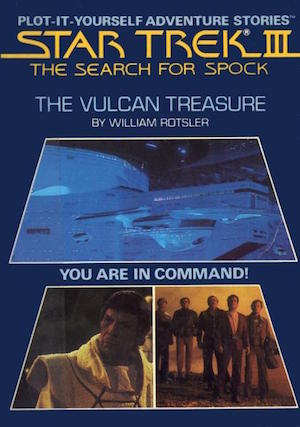
Wendy Barish’s output seems to be limited to two works, both written with the late William Rotsler: the 1984 collection Star Trek III: Short Stories and the choose-your-own-adventure Star Trek III: The Vulcan Treasure. Do I need to explain the choose-your-own-adventure genre? Basically, imagine a solitaire adventure game where the decision tree is presented as different alternates at the end of short text pieces. They were very popular back in the day, but I’d imagine computer games came along and ate their lunch.
Hillary Bartholomew
Semi-retired teacher Hillary Bartholomew is most active in speculative fiction as a poet, which I admit is a blind spot of mine.
Lee Barwood
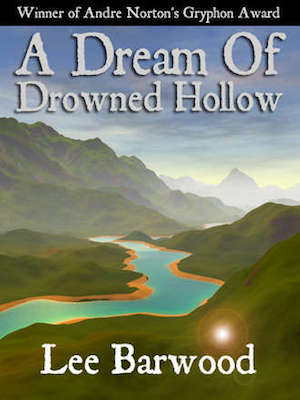
Lee Barwood contributed to the Liavek shared-world project edited by Emma Bull and Will Shetterly. Much of her work appears to have an ecological bent, as demonstrated by her novel A Dream of Drowned Hollow, in which a magic-rich backwater valley is threatened by profit-hungry developers.
Gael Baudino
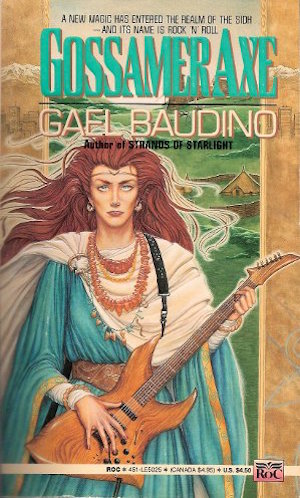
Gaèl Baudino writes under her own name as well as a number of pseudonyms. Readers interested in her early work should look for Gossamer Axe, in which a former victim of the Fair Folk aims music at her former persecutors. (Younger readers may find some aspects of the novel rather curious; they should remember that it was written in a very different time.) Readers interested in her more recent work could consider Snow City (published under the name G. A. Kathryns), a book in which a woman who has withdrawn from the world is inspired by the plight of a young girl to re-engage.
My online sources suggest that Baudino didn’t publish novels between 1999 and 2017. That is not right, is it?
Clare Bell

Clare Bell has a considerable affection for cats (or as they are better known, homicidal muffins). Cat-lovers might keep an eye out for Ratha’s Creature, first in the Books of the Named, whose protagonist is a female of a race of intelligent sabre-toothed cats1 . If you prefer standalone fantasy, there’s The Jaguar Princess, a shapeshifter fantasy set in the Aztec Empire.
Nancy Varian Berberick
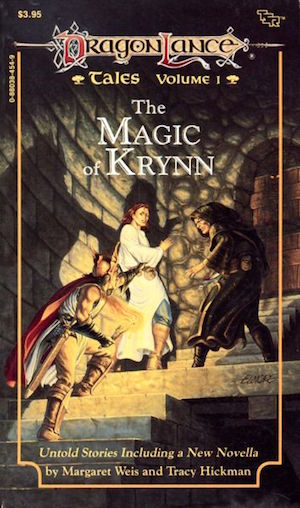
Nancy Varian Berberick is best known as an author of Dragonlance novels. Dragonlance is a popular set of adventure modules for the role-playing game Dungeons & Dragons. It also became a popular book series and expanded into a shared universe. It’s probably best to start at the beginning with her novelette Harvests, which can be found in the anthology The Magic of Krynn. For persons of a certain age, The Magic of Krynn’s Larry Elmore cover is crystallized nostalgia….
Elaine Bergstrom

Elaine Bergstrom’s novels often feature vampires, so the fact that she has written Ravenloft (D&D’s horror-themed setting) tie-in novels comes as no surprise. Tie-ins are only a small part of her output, as demonstrated by her debut non-tie-in novel Shattered Glass, whose protagonist is an unconventional vampire; it spawned five sequels.
Jo Beverly
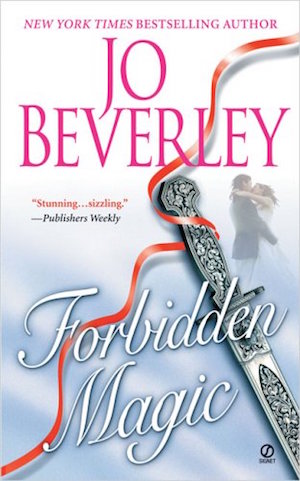
Jo Beverley was a prolific author of historicals, but she did publish at least one SFF work: Forbidden Magic, in which a penniless orphan determined to save her sister from a lecherous landlord turns for help to a magical statue. An unexpected proposal from an eccentric aristocrat may save the sisters. Complications ensue.
Anne Billson
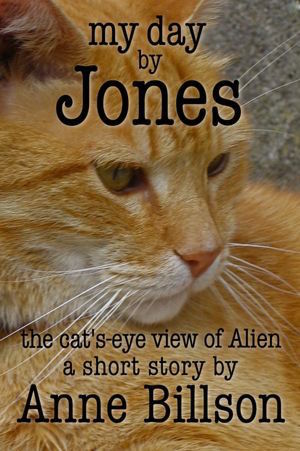
Anne Billson is a novelist, photographer, critic, and reviewer, among other pursuits. Vampire fans might like her Vamps, in which fashionable bloodsuckers attempt a takeover of fashion publishing. They are opposed by a young woman armed mainly with determination and scathing snark. Cat-fanciers might prefer to read her “My Day by Jones: the Cat’s-Eye View of Alien.” Laugh if you like, but Jones was the only sentient being who emerged completely unscathed from the events on the Nostromo.
Anne Bishop
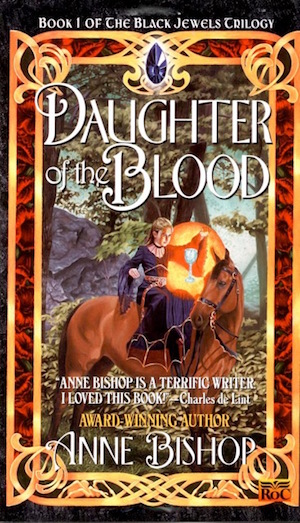
Crawford Award-winner Anne Bishop has been active in speculative fiction—primarily in various forms of fantasy—since the late 1980s. With more than a dozen novels and twenty short pieces to choose from, it is difficult to select just one as a Bishop starting point. Readers might consider Daughter of the Blood, the first volume in the non-con BDSM Black Jewels trilogy. If that’s your kind of thing.
Nina Boal
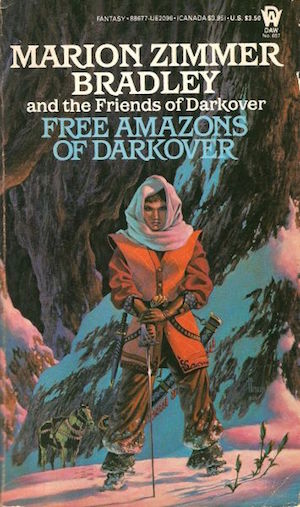
Nina Boal’s output so far has been short pieces that have appeared in anthologies set in the Darkover world of Marion Zimmer Bradley, anthologies such as Towers of Darkover and Tales of the Free Amazons.
Maya Kaathryn Bohnhoff
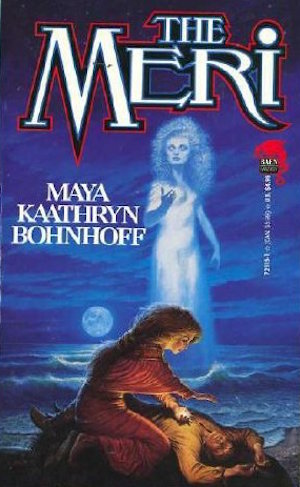
Maya Kaathryn Bohnhoff cannot be the sole Bahá’í author/musician active in speculative fiction, but she is the only one I know. Her body of work is small enough—eight books or so—that one could read the entire thing in a week or two. Those who might want just a taste could try The Meri, in which a young woman with great magical potential struggles against a society profoundly suspicious of magic. Alternatively, you could explore her shorter work in the collection Bimbo on the Cover.
Margaret Wander Bonanno
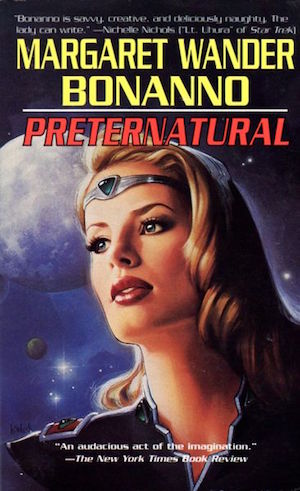
Margaret Wander Bonanno got her start as a novelist back in the 1970s, but her first genre work—Star Trek tie-in novel Dwellers in the Crucible—didn’t appear until 1985. Active under her own name as well as others, her works include the recursive fantasy Preternatural, in which a struggling novelist discovers that her fiction may actually be relating real events … unless she is living in a fictional reality.
Patricia Bow
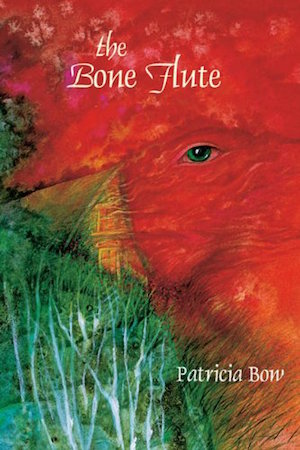
Canadian Patricia Bow is, I discover, a fellow Kitchener, Ontario resident! So while I have not yet read any of her work (which seems to be aimed at younger readers), I will try to find time to read her novels The Bone Flute and Fear of Dark Water.
Elizabeth Boyer
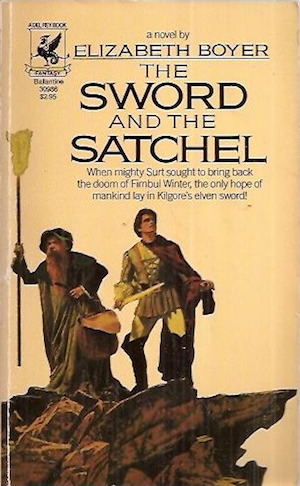
Elizabeth H. Boyer very nearly didn’t make it onto this list because I was utterly convinced I’d read her World of Alfar trilogy in the 1970s. Not so: The Sword and the Satchel appeared in 1980, with ten more Norse mythology-themed novels following over the next fifteen years.
Rebecca Bradley
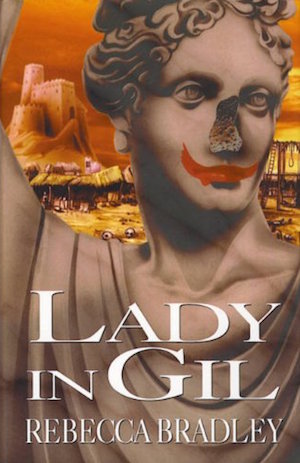
Canadian-born archaeologist Rebecca Bradley’s body of work to date isn’t huge, but it does at least include the amusing Lady in Gil, in which the occupied kingdom of Gil cries out for a mighty hero to save it. The hero of legend is unavailable, so his scholarly brother will just have to do.
Gillian Bradshaw
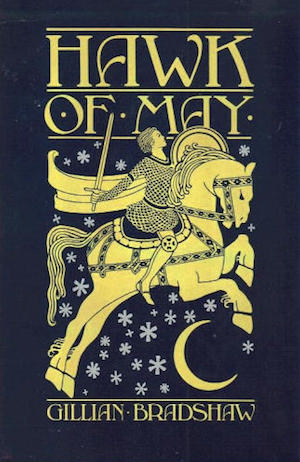
Gillian Bradshaw is active in a wide variety of genres, speculative and otherwise. Her Hawk of May, while clearly fantastic, draws on the author’s historical interests, being set in a post-Roman Britain struggling against endless waves of Saxons.
Margaret Buffie
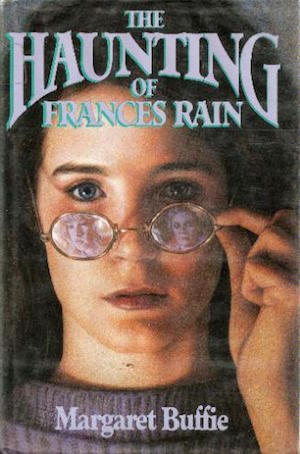
Canadian Margaret Buffie is a children’s author whose works are often also speculative fiction. SFdom doesn’t seem to have rained accolades down on her so far, but she is the recipient of the Silver Nautilus Award, the Vicky Metcalf Award, the Young Adult Canadian Book Award, and two McNally Robinson Book for Young People awards. Which suggest that she might be well worth reading, no? Readers new to her oeuvre could begin at the beginning with Buffie’s debut YA ghost story, The Haunting of Francis Rain.
Lois McMaster Bujold
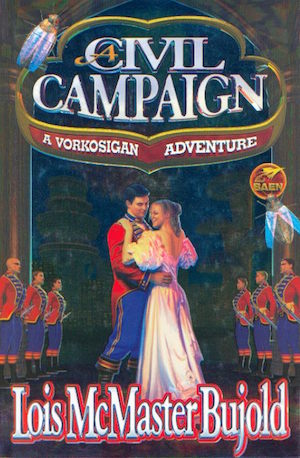
Lois McMaster Bujold. Well, let’s start by dealing with the reaction that some readers may have to just reading her name. They may wonder:
- Hasn’t she won more Hugos than Robert Heinlein?
- Isn’t she already the subject of ongoing review series on Tor.com and other sites?
- Isn’t she really the opposite of erased?
- Why do you need to write about her?
Well, even people who are household names now can vanish into obscurity surprisingly quickly. It only takes a moment or two out of the limelight for the public to forget one exists. Every erg of effort against erasure is an erg well invested.
In the 1980s and 1990s, most (but not all) of Bujold’s fiction was set in the Nexus, a network of worlds linked by wormholes. The Vorkosigan series chronicles the adventures of Cordelia Naismith, her energetic son Miles, and their friends and relatives. Since 2000 or so, Bujold has also been exploring a secondary fantasy world, the world of the Five Gods. This series, which just won the 2018 Best Series Hugo, includes both standalone novels and novellas. On top of all that, of course, there are books like The Spirit Ring or the Sharing Knife quadrology.
The single Bujold novel I’ve found most effective at convincing new readers to try her is A Civil Campaign, in which the love-struck Miles Vorkosigan attempts to apply to romance the same improvisational skills that previously got him accused of treason and cashiered for lying, and at one point left him an ice-cold corpse on a faraway planet. Hilarity ensues.
Emma Bull
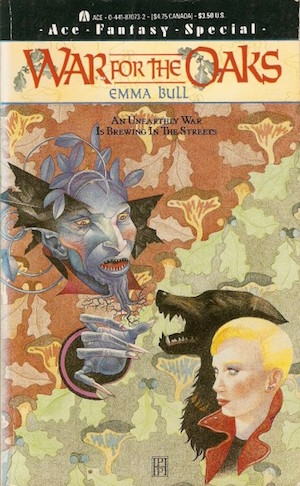
If Emma Bull has published anything at novel length in the last ten years, I have missed it. In the twenty years before that, however, her efforts included works from the aforementioned Liavek, one of the few interesting shared universe projects, the Borderlands shared universe, and award-winning novel-length pieces ranging from the pioneering urban fantasy War for the Oaks to the award-nominated Bone Dance.
* * *
Buy the Book
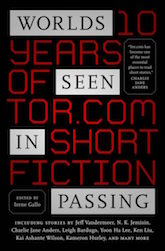

Worlds Seen in Passing: Ten Years of Tor.com Short Fiction
There were more women debuting in the 1980s than in the 1970s, and as a consequences my List of Shame, those women whose work I managed to overlook until now, is huge. I’m quite embarrassed to be confronted by the great holes in my awareness. On the other hand, perhaps I could be one of today’s ten thousand: if you’ve read any of the following authors, please feel free to suggest where someone new to them could start.
- Amy Bechtel
- Susan Beetlestone
- Delores Goodrick Beggs
- Judith R. Behunin
- Milena Benini
- Thea Bennett
- Janet Berliner
- Patricia Bernard
- Sue C. Bever
- Jane M. H. Bigelow
- Margaret Bingley
- Carmel Bird
- Karleen Bradford
- Sharon Brondos
- Mary Brown
- Sherrie Brown
- Taerie Bryant
- Cathy Buburuz
- Cara Bullinger
- Mollie L. Burleson
- Gale Burnick
1: A nimravid. Not a true cat, but catlike. Proves that anything even vaguely catlike will opt for sabre-teeth given a chance. However, both cats and the catlike would have been jealous of the gorgonopsids of the Permian era.
In the words of Wikipedia editor TexasAndroid, prolific book reviewer and perennial Darwin Award nomineeJames Davis Nicoll is of “questionable notability.” His work has appeared in Publishers Weekly and Romantic Times as well as on his own websites, James Nicoll Reviews and Young People Read Old SFF (where he is assisted by editor Karen Lofstrom and web person Adrienne L. Travis). He is surprisingly flammable.
[1]1: A nimravid. Not a true cat, but catlike. Proves that anything even vaguely catlike will opt for sabre-teeth given a chance. However, both cats and the catlike would have been jealous of the gorgonopsids of the Permian era.










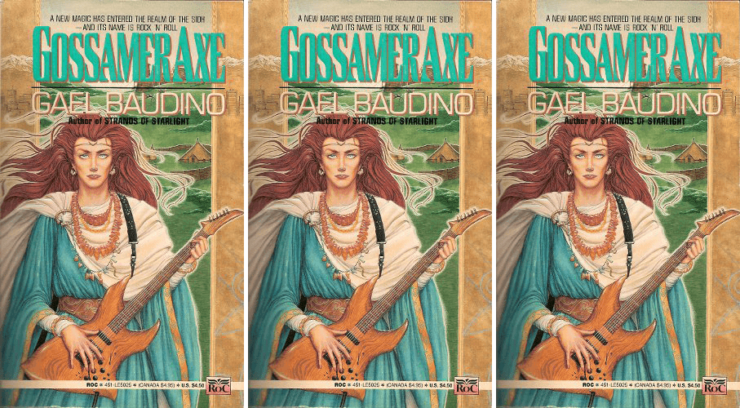
One technical correction – Bujold’s Sharing Knife series has four books in it.
I’m amazed at how few of these authors I have read. Thanks for bringing the efforts of these writers into view.
Speaking of sequels for which I’ve been waiting entirely too long: I’m still hoping that someday I’ll hold the sequel to Emma Bull’s Territory in my hot, little hands.
Glad to see Anne Bishop on here. I’ve adored her later works – The Others series is one of the freshest takes on the whole Werewolf movement, and Tir Alainn feels similarly different as regards the Folk. Its genuinely fun to see someone take on established overworn genres and not fall into the same old ruts.
Boyer’s The Thrall and the Dragon’s Heart was one of the books as a kid that hooked me on the genre.
Monday drudgery and at the top of my Tor feed is Gossamer Axe. Bless you. I love that book. You read the back blurb and it looks like a silly book, but it’s so great! It totally works! Sadly, she was working on a sequal and had issues with publishers. Gael Baudino is one of my very favorite authors, and someone who I believe is completely underrated. In her Dragonsword trilogy (Dragonsword, Duel of Dragons, Dragon Death), the second book is a look at the “strong woman” trope, and the shades it comes in. Her Children of Elthia series (Strands of Starlight, Mazes of Moonlight, Shrouds of Shadow, Strands of Sunlight and Spires of Spirit) is just so gorgeous and wonderful, and I am so sad that the author has come to hate the series. Her books of Water! (O Greenest Branch!, The Dove Looked In, and Branch and Crown) are fantastic and critical looks on the nature of religion. Everyone needs to know her work. When I see complete sets in used book stores, I tend to get them to give to people who need to know the glory of her work. :D
Also, love me some Ann Bishop. So glad to see her highlighted here.
Mary Brown’s PIGS DON’T FLY fantasy series was both touching and funny. She not only played with all the tropes, she stabbed them in the back or made them inhale laughing gas. The first book was THE UNLIKELY ONES. Sadly, she died too soon, and this was her only series. All of her paper versions are out of print, but some are available on Kindle.
I will second the Mary Brown, I remember reading The Unlikely Ones (although I don’t think I got to the sequels).
Gael Baudino had one of the more individual, and angry, voices that I remember from the 80s. I loved the Gossamer Axe. I’m curious if her philosophy has changed much over the past thirty years.
I think I’m due for a re-read of Bull’s Bone Dance
I read a LOT of sci fi and fantasy of this vintage and recently picked up Anne Bishop’s Daughter of the Blood. Because of all the strong reviews on Goodreads, I was shocked by the violent depictions of rape and child sexual abuse. I regretted reading this, as these topics were seemingly employed to be edgy and not for any other purpose I could ascertain.
Given that the ’80s were the beginning of my SFF reading explosion (primary a result of graduating college and having a job so I could buy books) and definitely a time when I was gravitating toward female authors, I’m a bit startled that I think I’ve only read 8 of these authors. (Of course, maybe I was simply reading lots of already-established authors.) Re: Gossamer Axe — I made the mistake of lending my copy to a woman I was dating and then failed to retrieve it before breaking up with her. The hard lessons we learn! Second hand copies can’t be found for love or money these days, though the book still gets recommended regularly.
Wow. I’ve missed almost all of these. I have two Boyers and The Hawk of May.
Well, and Bujold, who imo is not worth reading (at least that Mary Sue, Miles Vorkosigan, turned me right off).
“Jones was the only sentient being who emerged unscathed…”
Do we know that? I always suspected he was harboring a little cat-sized alien. It really seemed inconceivable that he could have escaped the general mayhem. I know there were sequels that should have disproved my theory, but I still have my doubts…
9: This series has been underlining for me how much less aware of the field I was compared to how aware I thought I was.
Third for Mary Brown. AFAIK she only wrote the Pigs Don’t Fly books, but I’ve seen those often enough in various libraries and used bookstores that I’m a bit surprised she made your List of Shame. (shame!)
Gael Baudino was a guest at a British filk-con a long while back. I recall she explained how the “Dragonsword” books got their title. She had done some basic market research in a few bookshops before starting to write commercially and noticed that many fantasy books had the the words “Dragon” or “Sword” in the title. She figured that “Dragonsword” would be a winner because of that.
INHO Jo Beverly & Forbidden Magic are misplaced in this list. To quote a reviewer, this is a marriage of convenience regency romance with elements of paranormal/magic. Nothing wrong with that, but really not SiFi/ Fantasy by most reader’s definition.
Meant to add, I loved Gossimer Axe too.
Given that she says on the G. A. Kathryns page that she spent 7 1/2 years playing harp rather than publishing, that basic timeline makes sense, James. Except she published something in 2015, per wiki and her Kathryns website. (It’s very gloomy about publishing, mind you.)
Mary Brown’s best book (though, in retrospect one with iffy politics) is Playing the Jack. It probably doesn’t fit as fantasy, but had a wonderful central character— running from home, and building a new identity. It was similar to Patricia Wrede’s Mairleon the Magician book… a bit too conventional, but a ripping yarn.
Similarly, I am happy to see Gillian Bradshaw on this list even though the book I re-read the most was The Beacon at Alexandria, rather than a real fantasy novel.
Yes, I liked novels where girls made innovative lives for themselves, even if the era still had them (spoiler alert) ending up with relationships.
Emma Bull’s early work— Falcon, War for the Oaks and, especially, Bone Dance, remains a favorite. Awesomely witty dialogue and some thought-provoking choices.
Maybe that was the 1980s theme— choices.
Rebecca Bradley’s Lady in Gill was a fun first read, but the series got weird quickly.
Jo Beverly, in addition to publishing the occasional romance novel with paranormal aspects, published a number of short stories and novellas which might be called Fantasy with Romance aspects, including a story in an anthology edited by Catherine Asaro, and a couple of dragon stories.
She also appeared in an early Writers of the Future book.
So I’d say she definitely qualifies as enough of an SF/F writer for this list.
@17,
Thanks- I had forgotten about The Beacon at Alexandria!
Anne Bishop’s Black Jewels trilogy is one of my favourite fantasy series. Yes, it depicts slavery and abuse — to show how badly the world has been twisted. The heroes are fighting to make their world better. The worldbuilding and magic system are intricate but clear to the reader. Bishop delights in turning tired fantasy tropes upside-down. Very impressive series, especially since Daughter of the Blood was her first novel. And thanks to the OP for reproducing the original cover with its gorgeous artwork.
I’m another lover of Anne Bishop’s books. I think you got the jist of the books wrong. While there is rape, sexual slavery, torture, these are all done by members of a government in power that needs to be overthrown, and by those who were abused and warped by them. A few of the abused are able to escape and be healed through the course of the trilogy. It’s not for the squeamish, but it’s certainly not advocating that kind of behavior nor is it presented as titillating.
Jo Beverley did mainly write romance novels, but she also wrote both science fiction and fantasy short stories on the side, so she definitely belongs on this list.
Amy Bechtel’s “Trucks” https://www.tangentonline.com/print–monthly-reviewsmenu-259/analog-reviewsmenu-54/944-analog-march-2007 was one that really stuck with me.
Alas, it is true that Gael Baudino did not publish much between 1999 and 2017. A further sorrow to me is that none of those books has been republished in electronic format. Gossamer Axe continues to be a favorite of mine.
One of the books I have a fond childhood memory of and initiated my interest in fantasy and science fiction is Ruth Chew’s The Trouble With Magic. Are there any other fans of Ruth Chew’s fiction?
@25: I loved “Magic in the Park” when I was a kid (in the 1970s).
@9 there are copies of Gossamer Axe available via abebooks.com I found 12 copies listed, although they are a tad pricey for used paperbacks. I use that site a lot for out of print books. If there is a copy available somewhere, you can usually find it there.
And this series is great. It reminds me of so many books I haven’t looked at in a while, and adds a few more to my to be acquired list.
Surprised to find Sherri Tepper isn’t on this list. She wrote some brilliant and very feminist skewed science fiction – The Gate to Women’s Country is the best known, Raising the Stones was also very thought-provoking about the nature of true independence and the trade offs for a peaceful society. I used to buy every new book by her that was published, but there’s been almost nothing in the past decade, and I recall reading somewhere that she had posted that her publisher just didn’t feel there was interest. :(
Tepper is not in this installment because this is focusing on
Tepper begins with T.
I hate to be the bearer of bad news but the tense you used suggests you may not be aware of this: Tepper passed away in 2016.
“My online sources suggest that Baudino didn’t publish novels between 1999 and 2017. That is not right, is it?“
As a HUGE Baudino fan since I was about 16, to my knowledge, that’s correct. I have never found any record of any novels published by Baudino between 1999 and 2017. I always lived in hope she might publish again; I hope this means perhaps she published something new this year?
“Gossamer Axe” is probably my favourite of her novels. But I can give equal credit to her “Strands” series, starting with “Strands of Starlight”, for helping me understand what trauma and trauma survival are. Having my own C-PTSD still undiagnosed at the time, those books were invaluable to me. I’ve just started rereading “Strands of Starlight” and find I understand it far better now than I did as a child. I highly recommend anything by Baudino to anyone who has ever been abused. She gets it. She’s been there too.
@Poison Ivy — She did self-pub a Gaming novel on her website. Which doesn’t have a date on it, but it does seem to be post-2017, anyway.
@10
i’d call Miles Vorkosigan a lot of things, but how can a dwarfish bipolar adventurer who doesn’t always succeed be a Mary Sue? That said, I’m less interested in Miles than his family, particularly the female members of it, and in general like the Five Gods books (and Penric novellas) much more. Bujold is a great writer.
@11: Okay, then I don’t feel so bad. This Erasure series makes me feel bad on multiple levels. As apparently you did, I prided myself on knowing the field — been reading SF since the 1960s. These lists are… humbling.
And then there’s my belief that those who take their fiction seriously are better people for having lived all those virtual lives. And I’ve believed that was even more true of SF, that a big point of SF is the examination of the human condition.
That people in the field are just ordinary people with ordinary prejudices and pettiness… always manages to disappoint me. I expect us to be better. (Likewise, it really grates when scientists squabble like little kids, and OMG they so do.)
But great series, and I very much appreciate what you’re doing here
I’m glad I recognize some of these names, although not nearly as many as I feel I should.
I really enjoyed The Meri by Maya Kaathryn Bohnoff, ditto for Emma Bull’s War for the Oaks, which I read around the same time as Mary Brown’s The Unlikely Ones (another favorite), so now those two are inextricably linked forever in my mind. I always re-read them together. I even foisted them both on my book club.
Thank you for including current works (if there are any), it will help when I’m looking for books to add to the collection.
As far as EMMA BULL, you missed Territory (2007). “Territory is a fantasy western or Weird West novel by Emma Bull, published in 2007. It placed 4th in the 2008 Locus Poll Award for Best Fantasy Novel. It was also nominated for a World Fantasy Award in the Best Novel category.” It was praised by people like Neil Gaiman and Jeff Vandermeer.
Speaking of Bujold, this is probably a good place to mention her one (?) television adaption – a very early story of hers (maybe her first published piece), “Barter,” was adapted for “Tales of the Darkside” (I was very startled to see her name turn up in the credits when I saw the episode).
I had to come over and read when the teaser image was Gossamer Axe. I wish Baudino’s work would get a rerelease in some format. Her elves were amazing. I did read Water! but think a lot of it went over my head and am not sure I want to try again.
Also, did Anne Bishop start writing in the 1980s?
@35: I don’t care what the description says. Territory isn’t a novel. It’s half a novel, and I’m not holding my breath for the second half. (At a convention a year or two ago, Emma Bull said that she wrote the first book without being sure what happened in the rest of the story. The inevitable followed.)
As for Sharon Brondos (in the James-also-mentioned category), I’m quite familiar with the name as a writer of fan fiction. She also published some m/m professional fiction (past the 1980s, I think). IIRC, some was original, some fan fiction with the serial numbers scraped off.
OMG. Gael Baudino’s “Gossamer Axe”! The perfect example, for me, of a book that I originally found howlingly ridiculous (heavy metal saves the world! From the Evil Sidhe!), but which I bought, retain on my shelf, and found that I could somehow never, ever forget it – and which I still think gives the best overall impression of how music is magic than any other other fantasy book out there besides my beloved “War for the Oaks.”. Kind of like Heinlein’s “Star Troopers” in that regard – another book that I found so annoying and ridiculous that I was talking back to it and making fun of it while I was reading it, and yet somehow it still managed to make way more of an impression on me than hundreds of other, “better” books I have read.
Gotta check out some of these other authors – oh, dear, as if my “to-read” list wasn’t long enough!
I admit I haven’t ever read Gossamer Axe, but I remember a time back in the late 80s & early 90s when rock ‘n’ roll elves were EVERYWHERE.
(My other favorite music-as-magic fantasy book is Ellen Kushner’s Thomas the Rhymer, but that is, of course, a very different type of music.)
@25 @26: The first chapter book I remember reading on my own as a kid without help was Ruth Chew’s “Do It Yourself Magic.” I read that one a few times and credit it with my lifelong loyalty to the genre. :)